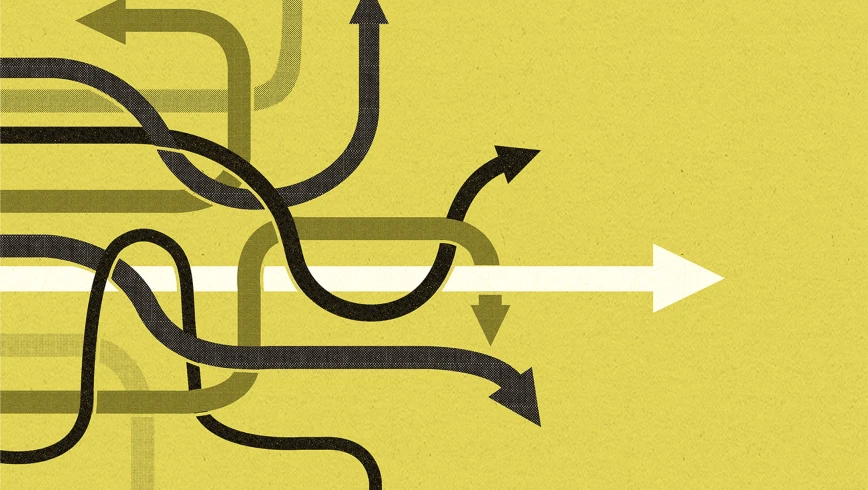Essentials, Digital, Brand
4 minutes read

Business consultants and strategists certainly noticed. Reports and books popped up everywhere, trying to help us anticipate and adapt. You know the drill “navigating the new normal” in these “unprecedented times.”
But in all the noise, something crucial often got overlooked.
A History Full of Unknowns
Our obsession with trying to predict what’s next wasn’t new. Economists had always tried to stay one step ahead of uncertainty. McKinsey’s “Next Normal” series, for instance, echoed conversations that once took place in 18th-century London coffee houses, after the South Sea Bubble burst. Back then, investors wondered what smart investors would do next in 1721.
And it wasn’t always a bubble. Sometimes it was war, or a supply crisis, political chaos, even famine. In 1709, it was a brutal frost that wrecked harvests. The long economic slump starting in 1873 was once called “The Great Depression” until the 1930s came along and redefined the term.
The Only Thing Certain Is Uncertainty
In the mid-2000s, then-Chancellor Gordon Brown famously said that “boom and bust” economics had ended. By 2006, he was talking about establishing long-term stability. And then, in 2007, the financial crash hit.
That same year, Nassim Nicholas Taleb published The Black Swan. He argued against trying to explain the world with neat models, warning that we’re terrible at predicting the future and should stop pretending otherwise.
Instead of trying to control uncertainty, Taleb suggested businesses should focus on how they responded to it. “You’re exposed to the improbable only if you let it control you,” he wrote. “You always control what you do.”
His ideas stuck. In the years that followed, especially during and after COVID more and more people started thinking in terms of strategy for uncertainty, rather than certainty.
But let’s be honest: just knowing that the world is unpredictable didn’t solve the very real challenge of what to do next.
Character Revealed in Crisis
That question — what do we do now? — often became more manageable when reframed: Who are we?
Because the crisis didn’t just demand action. It revealed character.
The choices businesses made in those messy, uncertain moments often flowed directly from their values. And those values made all the difference.
Take Timpson, for example. The shoe repair and key-cutting company had always focused on its people. They gave staff their birthdays off and let them use the company limo for weddings. So when unemployment surged, it felt natural for them to offer free dry-cleaning for anyone with a job interview. That was who they were and their actions matched their values.
We saw this everywhere during the COVID lockdowns. Lush opened its doors to let people wash their hands. Innocent donated unsold drinks to kids on free school meals. Allbirds gave free shoes to frontline workers. These weren’t empty PR moves at least not for brands that had always stood for community and care. They were natural responses rooted in identity.
Of course, we also saw the flip side. Businesses that closed up, protected shareholder value above all else, and left their teams behind. That revealed something, too.
Knowing What You Stand For
The truth was simple: when chaos hit, it helped to already know what you stood for.
A big part of our work at Sparks had always been about helping clients figure that out. We’d help them explore their character and bring it to the surface not as buzzwords, but as real traits that shaped decisions.
If their brand was a person, we’d ask: how would you introduce them? What three words would you use?
Three was usually enough. Not too vague, not too many. Just enough to shape the tone, visuals, language and more importantly, decisions in a moment of pressure.
We didn’t do that work just to design logos or pick colour palettes. We did it so that when things got tough, a business could lean on its identity, not scramble for one.
Because values, real ones, helped define what “success” looked like during times of stress. They gave teams something to rally behind. And when everyone understood and believed in that identity, they acted accordingly.
Less Fluff, More Substance
It was surprisingly easy to fall back on overused clichés: “we’re professional, friendly, approachable.” Sure — but who isn’t trying to be that?
Digging deeper into brand character took more thought. It took an honest look at who you were not, as well as who you were — and that made all the difference.
That’s why we work closely with business leaders, use real exercises, study the competition, and ask hard questions to draw out the real stuff.
Because when values are clear, brands have clarity. And clarity helps people make decisions, even when everything else feels uncertain.
So… Is It Time to Rethink Your Brand?
Does your brand still reflect who you are or has it drifted? Does it still connect with the world as it is today?
Maybe it’s time to take a fresh look.
We often run brand reviews using just a few materials: a website, a brochure, a slide deck to help clients see what was working, what wasn’t, and where the brand could be sharpened.
If you’re wondering whether your current brand still fits the moment you’re in, let’s talk.

